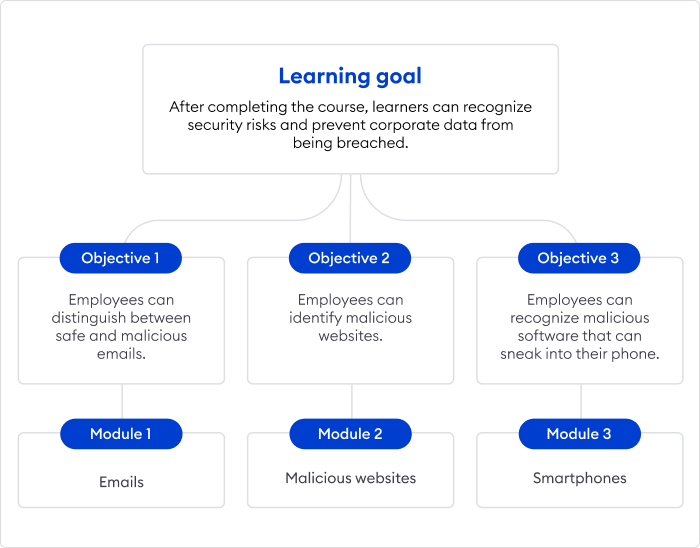
Data Security Training Needs an Update
Data security training needs an update. Seriously, the threats are evolving faster than our training programs. We’re still relying on outdated methods, leaving our organizations vulnerable to sophisticated attacks. This isn’t just about ticking a compliance box; it’s about protecting our sensitive information and ensuring business continuity in a world increasingly dominated by cyber threats. This post dives into why a refresh is crucial and how we can make it happen.
Think about the last time you received data security training. Was it a boring PowerPoint presentation? A checklist of policies to skim? If so, you’re not alone. Many organizations are still relying on ineffective training methods that fail to engage employees or adequately prepare them for the realities of modern cyber threats.
We’ll explore why this is a problem, the new threats we face, and what we can do to build a more effective and engaging training program.
Outdated Data Security Training Methods
Data security training is crucial, but relying on outdated methods leaves organizations vulnerable. Modern cyber threats require a dynamic and engaging approach to security awareness, far beyond the passive methods of the past. Failing to update training methodologies not only wastes resources but also significantly increases the risk of successful cyberattacks.Outdated methods often fail to resonate with employees, leading to low engagement and poor knowledge retention.
This ultimately undermines the effectiveness of the entire security program. Let’s examine three common culprits.
Ineffective Methods: PowerPoint Presentations and Lengthy Manuals
PowerPoint presentations, while sometimes useful for conveying information, often fail as the sole method for data security training. Long, monotonous presentations filled with technical jargon can easily lead to disengagement and poor information retention. Similarly, lengthy security manuals are rarely read in their entirety. Employees often lack the time or motivation to wade through dense technical documents, leading to incomplete understanding and missed crucial information.
The passive nature of these methods doesn’t foster active learning or practical application of security best practices. This lack of engagement significantly reduces the effectiveness of the training, making it a poor investment of time and resources.
Ineffective Methods: Standalone Annual Training Sessions
Annual, one-off training sessions are another common outdated approach. The cybersecurity landscape changes rapidly. A single session conducted once a year cannot adequately address the evolving threats and vulnerabilities that organizations face. By the time the next annual session rolls around, much of the information presented in the previous session may be outdated or irrelevant. This approach also fails to provide opportunities for reinforcement and ongoing learning, crucial for maintaining a strong security posture.
Regular, shorter, and more frequent training modules are far more effective in keeping employees up-to-date with the latest threats and best practices.
Seriously, our data security training is ancient history! We’re building amazing new apps with the latest tech, like the innovative approaches discussed in this article on domino app dev the low code and pro code future , but our security awareness is stuck in the dial-up era. This needs to change – fast! The risks are simply too high with our increasingly sophisticated systems.
Ineffective Methods: Compliance-Focused Training
While compliance is essential, focusing solely on meeting regulatory requirements without addressing practical applications can be ineffective. Training that merely ticks boxes without engaging employees in real-world scenarios often fails to foster a security-conscious culture. Employees may complete the training to satisfy compliance requirements but lack the understanding or motivation to apply the learned principles in their daily work.
This approach leads to a false sense of security and increases the organization’s vulnerability to attacks. A holistic approach that blends compliance requirements with practical, engaging training is much more effective in promoting a strong security culture.
Comparison of Outdated and Modern Training Approaches
| Method | Effectiveness | Cost | Engagement |
|---|---|---|---|
| PowerPoint Presentations & Manuals | Low; poor retention and application | Low initial cost, but high overall due to ineffectiveness | Low; passive learning |
| Annual Training Sessions | Low; quickly outdated information | Moderate; potentially high if ineffective | Low; infrequent reinforcement |
| Compliance-Focused Training | Low; lacks practical application | Moderate; may not improve security posture | Low; often perceived as tedious |
| Interactive Simulations & Gamification | High; active learning and practical application | Moderate to High; requires development and maintenance | High; engaging and memorable |
| Microlearning Modules & Regular Refresher Courses | High; consistent reinforcement and updates | Moderate; ongoing cost for content updates | Moderate to High; shorter, focused learning |
| Scenario-Based Training & Phishing Simulations | High; practical application and awareness building | Moderate; requires careful planning and execution | High; engaging and realistic |
Evolving Threat Landscape

The cyber threat landscape has undergone a dramatic transformation in the last five years, evolving at a pace that outstrips many organizations’ ability to adapt. New attack vectors, sophisticated techniques, and a surge in malicious actors have created a significantly more dangerous environment for businesses and individuals alike. Outdated security training programs, often focused on legacy threats, fail to equip employees with the knowledge and skills needed to navigate this complex and ever-changing threat landscape.The rise of AI-powered attacks, the increasing sophistication of phishing and social engineering campaigns, and the expansion of the Internet of Things (IoT) have introduced new vulnerabilities that traditional training methods simply don’t address.
Furthermore, the blurring lines between the physical and digital worlds, through concepts like operational technology (OT) security, require a more holistic approach to security awareness than previously considered necessary.
New Threats and Vulnerabilities, Data security training needs an update
The past five years have witnessed the proliferation of several significant threats. AI-driven phishing campaigns, for instance, now leverage machine learning to craft incredibly convincing messages tailored to individual recipients, increasing the likelihood of successful attacks. Similarly, the rise of deepfakes and other forms of synthetic media presents a new challenge, making it increasingly difficult to discern genuine communication from malicious imitations.
Furthermore, the sheer volume of IoT devices connected to corporate networks expands the attack surface dramatically, creating numerous entry points for malicious actors. Existing training often overlooks these threats, focusing instead on older methods like simple password cracking or readily identifiable phishing attempts.
Scenarios Illustrating Vulnerabilities Due to Outdated Training
Scenario 1: A company uses an outdated training program that focuses solely on recognizing obvious phishing emails. An employee receives a highly sophisticated AI-generated phishing email mimicking their CEO’s communication style. The email contains a seemingly innocuous link leading to a realistic-looking login page designed to steal credentials. Because the email doesn’t display the typical warning signs covered in the outdated training, the employee falls victim to the attack, resulting in a significant data breach.Scenario 2: A manufacturing plant relies on outdated security training that doesn’t cover the specific vulnerabilities of industrial control systems (ICS).
A malicious actor exploits a known vulnerability in the plant’s OT network, gaining access to critical infrastructure. This attack could result in significant operational disruptions, financial losses, and even physical damage. The lack of specialized training leaves employees unable to identify or respond effectively to this targeted attack.Scenario 3: A company’s security training focuses on individual user behavior but ignores the potential for supply chain attacks.
A malicious actor compromises a third-party vendor, gaining access to the company’s network through a seemingly legitimate software update. The outdated training doesn’t prepare employees to recognize the subtle signs of a compromised vendor, leading to a successful intrusion and potential data theft. This highlights the gap between individual-focused security training and the complexities of modern supply chains.
Lack of Practical Application
Let’s be honest, reading about data security policies and procedures is about as exciting as watching paint dry. While theoretical knowledge is crucial, it’s the practical application that truly solidifies understanding and builds muscle memory for safe practices. Without hands-on experience, employees are less likely to remember and apply crucial security measures when faced with real-world scenarios. Effective data security training needs to move beyond passive learning and embrace active engagement.Effective data security training needs to move beyond passive learning and embrace active engagement.
Simply memorizing facts and figures won’t prepare employees for the nuanced challenges of protecting sensitive data. Hands-on exercises and realistic simulations bridge this gap, allowing trainees to apply their knowledge in a safe environment, fostering a deeper understanding and building confidence in their abilities. This approach significantly improves retention and ultimately, strengthens an organization’s overall security posture.
Practical Exercises and Simulations
Three practical exercises or simulations can significantly boost the effectiveness of data security training. These exercises should mirror real-world situations, challenging participants to apply their knowledge in a controlled setting. This approach promotes active learning and enhances retention of critical security concepts.
- Phishing Simulation: Participants receive simulated phishing emails designed to mimic real-world threats. Successful identification and reporting of suspicious emails are rewarded, while falling for the scams provides a learning opportunity to analyze what made the email convincing and how to avoid similar traps in the future. This exercise helps build awareness and critical thinking skills crucial for preventing phishing attacks.
- Vulnerability Scanning and Penetration Testing (Simplified): Trainees can be presented with a simplified, controlled network environment containing deliberate vulnerabilities. Using readily available, ethical hacking tools (or simulated versions), they can practice identifying and reporting these weaknesses. This simulation provides practical experience in identifying security flaws, a skill highly valued in any organization. The exercise should focus on identifying vulnerabilities, not exploiting them for malicious purposes.
- Incident Response Simulation: This simulation presents trainees with a realistic data breach scenario. They must follow established incident response procedures to contain the breach, mitigate damage, and recover from the attack. This exercise reinforces the importance of having a well-defined incident response plan and provides valuable experience in executing it under pressure. The scenario could involve a ransomware attack, a data leak, or a denial-of-service attack.
Key Elements of Effective Practical Exercises
To maximize the effectiveness of practical data security training exercises, certain key elements should always be included. These elements ensure the exercises are engaging, relevant, and provide valuable learning opportunities.
- Clear Objectives: Participants should understand the learning goals of the exercise from the outset.
- Realistic Scenarios: The exercises should mimic real-world situations as closely as possible.
- Constructive Feedback: Trainees should receive immediate and detailed feedback on their performance.
- Safe Environment: The exercise should take place in a controlled environment where mistakes can be made without real-world consequences.
- Actionable Takeaways: Participants should leave the exercise with clear, practical steps they can implement to improve their data security practices.
Employee Engagement and Retention
Data security training isn’t just about ticking boxes; it’s about fostering a security-conscious culture. Effective training needs to resonate with employees, leading to lasting behavioral changes. Unfortunately, many training programs fail to achieve this, resulting in low retention rates and a workforce vulnerable to cyber threats. Let’s explore why this happens and how we can improve.Employee engagement and retention in data security training are crucial for building a strong security posture within an organization.
Honestly, our data security training is seriously outdated; employees need to understand the modern threats we face. This is especially true given the explosion of cloud services, and the need for tools like those discussed in this excellent article on bitglass and the rise of cloud security posture management. Understanding cloud security posture management is crucial for effective data protection, and that understanding needs to be part of our updated training program.
Poor engagement often leads to employees ignoring or forgetting critical security protocols, increasing the organization’s vulnerability to cyberattacks. High retention, on the other hand, empowers employees to actively participate in protecting sensitive data.
Reasons for Poor Information Retention in Data Security Training
Three common reasons contribute to employees struggling to retain information from data security training. First, many training programs rely on passive learning methods like lengthy presentations and monotonous readings, leading to information overload and poor recall. Second, the lack of relevance to employees’ daily tasks makes the information seem abstract and unimportant. Finally, insufficient opportunities for practice and application mean employees don’t solidify their understanding through hands-on experience.
Strategies for Improving Employee Engagement and Knowledge Retention
Improving employee engagement and knowledge retention requires a multi-pronged approach. First, tailor training to specific roles and responsibilities, making the information immediately relevant to employees’ daily work. Instead of generic presentations, focus on scenarios and examples that employees can directly relate to their jobs. Second, incorporate active learning techniques such as interactive exercises, quizzes, and simulations to enhance engagement and knowledge retention.
Finally, reinforce learning through regular reminders, follow-up quizzes, and opportunities for practical application. This continuous reinforcement keeps the information fresh in employees’ minds and promotes long-term retention.
Interactive Methods to Improve Engagement in Data Security Training
Interactive methods are vital for improving engagement. Here are five examples:
- Gamification: Incorporate game mechanics like points, badges, and leaderboards to make learning fun and competitive. A simple example could be a phishing simulation where employees earn points for correctly identifying phishing emails.
- Interactive Simulations: Use realistic simulations to allow employees to practice responding to cyber threats in a safe environment. For example, a simulation could present a scenario where an employee receives a suspicious email and must decide how to respond.
- Scenario-Based Learning: Present real-world scenarios that employees might encounter, requiring them to make decisions based on security policies. For example, a scenario might involve a lost laptop and the steps an employee should take.
- Role-Playing Exercises: Engage employees in role-playing exercises to practice handling various security situations. An example would be role-playing a situation where an employee must handle a suspected data breach.
- Interactive Quizzes and Assessments: Regularly assess employee understanding through short, engaging quizzes that provide immediate feedback. These quizzes can be incorporated throughout the training program to reinforce learning.
Measuring Training Effectiveness

So, we’ve revamped our data security training, addressing outdated methods and the ever-shifting threat landscape. But how do we know if it’s actually working? Measuring the effectiveness of our training is crucial, not just for proving ROI, but for making continuous improvements and ensuring our employees are truly equipped to protect our data. This involves more than just handing out certificates; it’s about understanding how the training translates into improved security behaviors.
Methods for Measuring Training Effectiveness
Three key methods can help gauge the success of your data security training program: knowledge assessments, phishing simulations, and behavioral analysis. These approaches provide a multifaceted view of learning and practical application, going beyond simple completion rates.
Knowledge Assessments
Post-training quizzes or exams are a straightforward way to assess knowledge retention. These assessments should cover key concepts taught in the training, focusing on practical application rather than rote memorization. For example, a multiple-choice question might present a realistic scenario: “You receive an email from your bank asking for your password. What should you do?” The correct answer would reflect secure practices, and analyzing the results will show areas where further clarification or reinforcement is needed.
Tracking the average score across different employee groups can also highlight areas where training needs to be tailored. For instance, if the IT department consistently scores higher than the marketing department, it might indicate a need for more focused training for marketing personnel.
Phishing Simulations
Phishing simulations are a powerful way to evaluate how well employees apply their training in real-world scenarios. These controlled tests involve sending simulated phishing emails to employees and monitoring their responses. Tracking the click-through rate (the percentage of employees who click on the malicious link) provides a direct measure of susceptibility to social engineering attacks. A lower click-through rate indicates improved awareness and a more effective training program.
Analyzing the types of phishing emails that employees fall for can also help refine future training to address specific vulnerabilities. For instance, if many employees click on emails with urgent subject lines, the training should emphasize the importance of verifying urgent requests.
Behavioral Analysis
Behavioral analysis focuses on observing actual employee actions related to data security. This might involve monitoring access logs to identify unusual activity, reviewing incident reports to see if training has reduced the number of security incidents, or conducting employee interviews to understand their decision-making processes in security-related situations. For example, a reduction in the number of reported incidents related to password breaches after the training can indicate improved awareness and adherence to security protocols.
This method provides a valuable, real-world assessment of training effectiveness, complementing the knowledge-based and simulated approaches.
Using Data to Improve Training
The data gathered from these methods is invaluable for iterative improvement. Analyzing knowledge assessment results can reveal knowledge gaps, allowing for adjustments to the training content or delivery methods. For example, consistently low scores on a specific topic indicate a need for more detailed explanation or additional practice exercises. Similarly, phishing simulation data can pinpoint areas where employees are most vulnerable, allowing for targeted training modules addressing specific attack vectors.
Analyzing behavioral data can show whether training has translated into improved security practices, and if not, suggests the need for a different approach.
Visual Representation of Training Effectiveness
A bar chart can effectively visualize training effectiveness. The horizontal axis would represent the key metrics: Knowledge Assessment Average Score, Phishing Simulation Click-Through Rate, and Number of Security Incidents (pre- and post-training). The vertical axis would represent the percentage or number. Each metric would have two bars: one for the pre-training measurement and one for the post-training measurement.
For example, if the average knowledge assessment score increased from 60% to 85% after the training, the bar for the post-training score would be significantly taller than the pre-training score bar. Similarly, if the phishing simulation click-through rate decreased from 20% to 5%, the post-training bar would be much shorter. A decrease in the number of security incidents post-training would also be represented by a shorter bar compared to the pre-training value.
This visual representation clearly demonstrates the impact of the training program on key security metrics.
Integration with Existing Systems
Integrating data security training into an organization’s existing IT infrastructure and workflows presents a significant challenge. Many companies already have established systems for employee onboarding, performance management, and learning and development. Successfully integrating data security training requires careful planning and consideration of these existing systems to avoid creating friction and ensure adoption. A poorly integrated program can lead to low participation rates and ultimately, ineffective training.The key lies in finding a balance between leveraging existing systems to streamline the process and avoiding disruptive changes to established workflows.
This requires a deep understanding of the current IT infrastructure, including learning management systems (LMS), single sign-on (SSO) solutions, and employee communication channels. Furthermore, consideration should be given to the technical capabilities of the chosen training platform and its compatibility with existing systems.
Challenges of Integration
Integrating data security training often involves overcoming several hurdles. One common challenge is the lack of interoperability between different systems. For instance, the organization’s LMS might not be compatible with the chosen data security training platform, requiring manual data entry or custom integrations. Another challenge is the potential for data silos, where data security training records are isolated from other employee performance data, hindering a holistic view of employee training and performance.
Finally, resistance to change from employees accustomed to existing workflows can also impede successful integration.
Solutions for Seamless Integration
Several solutions can facilitate seamless integration. Utilizing an LMS with robust API capabilities allows for direct integration with other systems, enabling automatic enrollment, progress tracking, and completion reporting. This automation eliminates manual data entry and reduces administrative overhead. Another effective strategy is adopting a modular training approach, where training modules can be easily incorporated into existing onboarding or performance management systems.
This approach allows for a gradual integration and minimizes disruption to established workflows. Furthermore, selecting a training platform that supports SSO can simplify the login process for employees, improving accessibility and encouraging participation.
Ideal Workflow for Data Security Training Integration
The following flowchart describes an ideal workflow for integrating data security training:
1. Needs Assessment
The process begins with a comprehensive needs assessment to identify training gaps and determine the specific data security training requirements.
2. Training Material Development
Based on the needs assessment, relevant and engaging data security training materials are developed. This includes selecting the appropriate training delivery method (e.g., e-learning, instructor-led training, blended learning).
3. System Selection/Integration
An appropriate training platform is selected, considering compatibility with existing systems (LMS, SSO, etc.). Integrations are planned and implemented to ensure seamless data flow.
4. Employee Enrollment
Employees are automatically enrolled in the training program through integration with existing HR or LMS systems. Communication channels (e.g., email, intranet) are used to inform employees about the training.
5. Training Delivery and Completion
Employees complete the data security training using the chosen platform. Progress is tracked automatically through system integration.
6. Assessment and Evaluation
Automated assessments and evaluations are conducted, with results automatically recorded and reported.
7. Reporting and Analysis
Integrated reporting features provide data on training completion rates, assessment scores, and overall training effectiveness. This data informs future training initiatives.
8. Continuous Improvement
The entire process is regularly reviewed and improved based on data analysis and employee feedback. This ensures the training program remains relevant and effective.
Addressing Specific Roles and Responsibilities
Data security training shouldn’t be a one-size-fits-all approach. The needs of a software developer vastly differ from those of a CEO or a customer service representative. Tailoring training to specific roles ensures employees receive relevant information and develop the necessary skills to protect sensitive data effectively. Ignoring these nuances leads to ineffective training and increased vulnerabilities.Different roles within an organization have varying levels of access to sensitive data and varying responsibilities concerning its protection.
This necessitates a differentiated approach to data security training. A comprehensive program will address these differences, ensuring that each employee understands their specific role in maintaining the organization’s security posture.
Data Security Training Content by Role
Effective data security training requires a nuanced approach, recognizing the unique responsibilities and access levels of different roles. This section details the specific content and skills that should be included in training for three distinct roles: developers, executives, and end-users.
Training Requirements for Three Distinct Roles
The following table Artikels the specific training requirements for developers, executives, and end-users. The training should be modular, allowing for customization based on individual needs and existing knowledge.
| Role | Specific Training Content | Skills to be Developed | Assessment Methods |
|---|---|---|---|
| Developer | Secure coding practices, vulnerability management, penetration testing, data encryption techniques, compliance regulations (e.g., GDPR, CCPA), API security, software development lifecycle (SDLC) security | Ability to write secure code, identify and mitigate vulnerabilities, perform code reviews, understand and apply security best practices throughout the SDLC | Code reviews, vulnerability assessments, penetration testing exercises, quizzes, practical assignments |
| Executive | Data governance policies, risk management frameworks, incident response planning, regulatory compliance, strategic security planning, budget allocation for security initiatives, third-party risk management | Ability to make informed decisions regarding security investments, understand and manage security risks, communicate effectively about security issues, oversee security initiatives | Scenario-based exercises, case studies, presentations, discussions, participation in security planning meetings |
| End-User | Password security, phishing awareness, social engineering tactics, malware prevention, data loss prevention (DLP), physical security best practices, reporting security incidents | Ability to identify and avoid phishing attempts, practice good password hygiene, recognize and report suspicious activity, understand and follow security policies | Simulated phishing emails, quizzes, interactive modules, scenario-based training, knowledge assessments |
Wrap-Up

In short, updating data security training isn’t just a good idea—it’s a necessity. The cyber threat landscape is constantly evolving, and our training needs to keep pace. By adopting modern training methods, incorporating practical exercises, and focusing on employee engagement, we can significantly improve our organization’s security posture and protect ourselves from increasingly sophisticated attacks. Let’s move beyond outdated methods and build a training program that actually works!
FAQs: Data Security Training Needs An Update
What are the legal implications of inadequate data security training?
Inadequate training can lead to non-compliance with regulations like GDPR or CCPA, resulting in hefty fines and reputational damage.
How often should data security training be updated?
Ideally, training should be reviewed and updated at least annually, or even more frequently if significant changes occur in the threat landscape or regulatory environment.
How can I measure the ROI of improved data security training?
Measure reductions in security incidents, phishing susceptibility rates, and employee knowledge gaps through pre and post-training assessments.
What are some cost-effective ways to update data security training?
Utilize free online resources, create internal training materials, and leverage existing IT systems to reduce costs.





